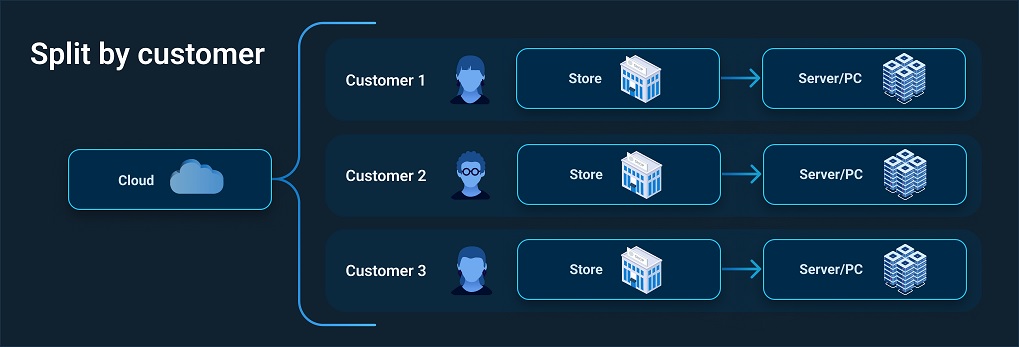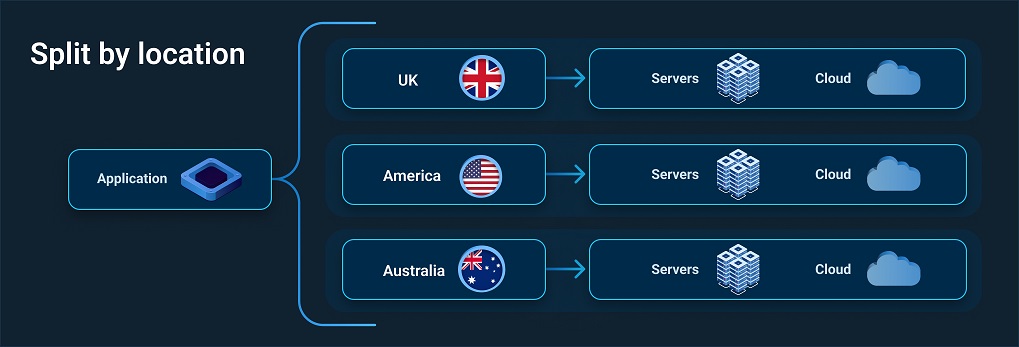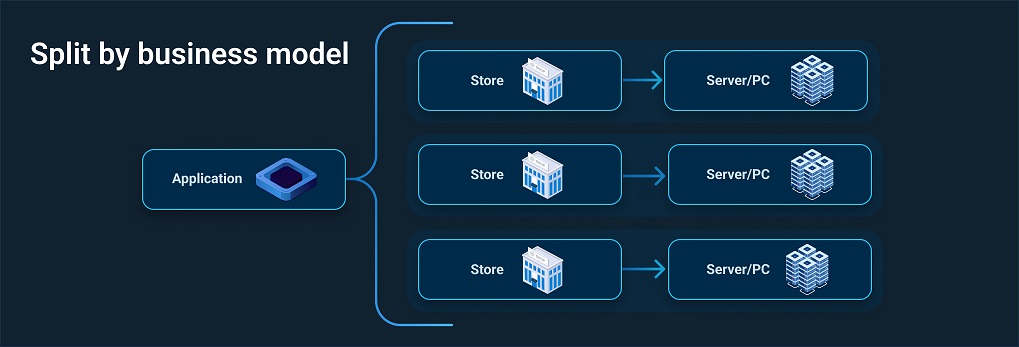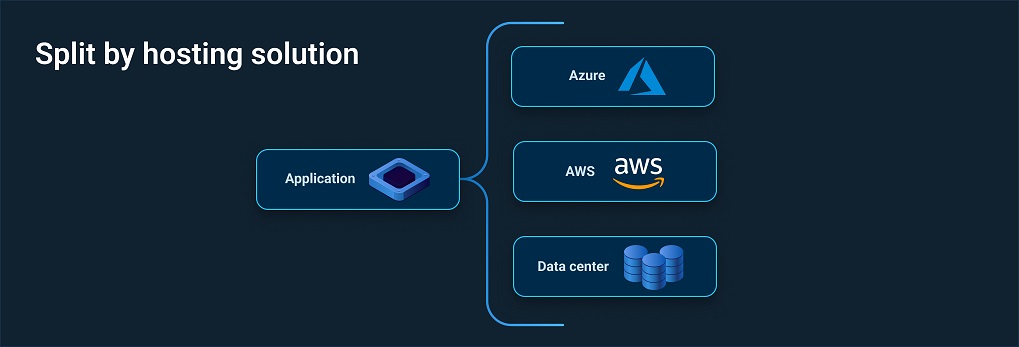GitLab announced the general availability of GitLab Duo with Amazon Q.
Multi-tenancy was once a term that described a very particular software architecture: Where an application lives on a server for other computers — tenants — to use it.
Over the years, the definition expanded and now describes much more than that. Sometimes we use it for software architecture, sometimes not. Sometimes we use it to explain how we serve or deploy applications, and even how users access them.
At its simplest, the software industry uses multi-tenancy to explain where software or its architecture splits into manageable chunks. These chunks could save money, simplify processes, or make things safer or easier for customers.
Rather than try to unravel the whole term, it's easier to explain the scenarios typically described as multi-tenancy.
Split by customer
Splitting tenancy by customer is a common architecture for Software as Service (SaaS) applications. A SaaS application is software delivered via a subscription model and usually accessed by a web browser. SaaS software providers manage the application's infrastructure so users don't have to.
Multi-tenancy in SaaS sees each customer get the same product but with resources separate from other customers.
For example, your customers would get isolated:
■ Space on your hosting platform
■ Identity management and security functions
■ Databases
Here, your tenants could be your customers or infrastructure.

Split by location or region
This is where organizations, like big enterprises, serve customers worldwide.
Worldwide or regional support usually means accounting for regional differences. That includes region-specific:
■ Content
■ Languages
■ Outage windows
■ Legal requirements
Here, your tenants could be your regional infrastructure.

Split by business model
Your business model could dictate where your application becomes multi-tenancy. The best example is delivering software to many brick-and-mortar locations, like retail chains, hospitals, hotels, and more.
In this scenario, you could be:
■ Working for an international organization delivering software to its worldwide branches
■ An independent organization delivering software to physical locations for many organizations
Here, your tenants could be each store or a group of stores.

Split by hosting solution
Due to strict processes or legal requirements, you may need to deliver your software to your customers' own hosting solutions. This could be common if you support government agencies or businesses in other sensitive industries.
For example, you may need to deliver your software to your customer's own:
■ Cloud services
■ On-premises servers or desktop computers
■ Data centers
■ Hybrid setups
Here, your tenants could be a deployment target or a group of deployment targets.

And everything in between
At this stage, you may be thinking, "our multi-tenancy application fits a couple of these descriptions," and you'd be absolutely right.
These scenarios can crossover, for sure. And some apps may use more than one multi-tenancy variation at different stages.
That's because software development is only growing more complex and with it, the term evolves too. The lines we draw between these scenarios are blurry and will only get blurrier.
Industry News
Perforce Software and Liquibase announced a strategic partnership to enhance secure and compliant database change management for DevOps teams.
Spacelift announced the launch of Saturnhead AI — an enterprise-grade AI assistant that slashes DevOps troubleshooting time by transforming complex infrastructure logs into clear, actionable explanations.
CodeSecure and FOSSA announced a strategic partnership and native product integration that enables organizations to eliminate security blindspots associated with both third party and open source code.
Bauplan, a Python-first serverless data platform that transforms complex infrastructure processes into a few lines of code over data lakes, announced its launch with $7.5 million in seed funding.
Perforce Software announced the launch of the Kafka Service Bundle, a new offering that provides enterprises with managed open source Apache Kafka at a fraction of the cost of traditional managed providers.
LambdaTest announced the launch of the HyperExecute MCP Server, an enhancement to its AI-native test orchestration platform, HyperExecute.
Cloudflare announced Workers VPC and Workers VPC Private Link, new solutions that enable developers to build secure, global cross-cloud applications on Cloudflare Workers.
Nutrient announced a significant expansion of its cloud-based services, as well as a series of updates to its SDK products, aimed at enhancing the developer experience by allowing developers to build, scale, and innovate with less friction.
Check Point® Software Technologies Ltd.(link is external) announced that its Infinity Platform has been named the top-ranked AI-powered cyber security platform in the 2025 Miercom Assessment.
Orca Security announced the Orca Bitbucket App, a cloud-native seamless integration for scanning Bitbucket Repositories.
The Live API for Gemini models is now in Preview, enabling developers to start building and testing more robust, scalable applications with significantly higher rate limits.
Backslash Security(link is external) announced significant adoption of the Backslash App Graph, the industry’s first dynamic digital twin for application code.
SmartBear launched API Hub for Test, a new capability within the company’s API Hub, powered by Swagger.
Akamai Technologies introduced App & API Protector Hybrid.




